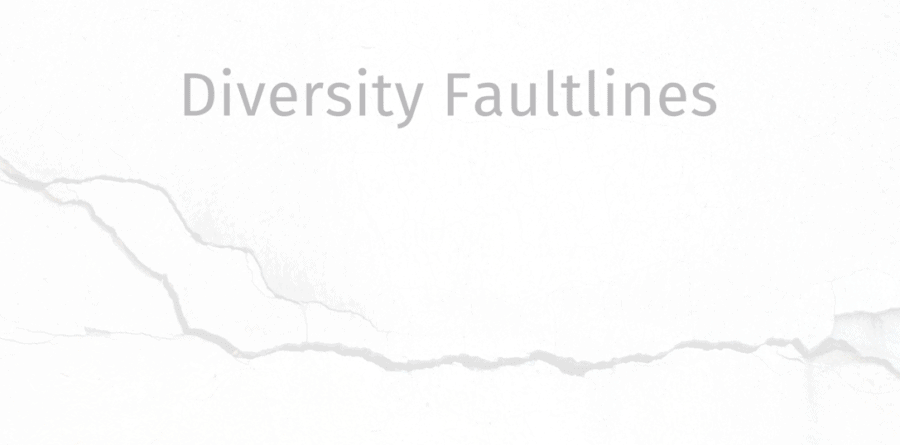9/05/2022
Mental Health Awareness Week 2022: It’s time to address loneliness in the workplace
Contributed by Abstract
20/09/2021 - Abstract

The business case argument for workforce diversity regularly mentions that when leveraged effectively, a diverse workforce generates diversity of thinking, delivers improved creative problem solving, innovation and a better understanding of customers and their emergent needs. However, in the drive towards the creation of more diversified work teams some leaders trip up over an unforeseen obstacle that interferes with progress. There occurs what scholars describe as organisational diversity faultlines.
A diversity faultline is a hypothetical dividing line that splits a work team into subgroups based on one or more attributes that are detrimental to the achievement of an organisational objective. The concept was originated by Dora Lau and J. Keith Murnighan in 1998. A subgroup is made up of individuals with identical demographic characteristics, for example, ethnicity, gender, educational attainment, religious belief, class, or age. These groups have underlying often unseen patterns. Studies on the psychology of team working reveal there is a strong desire pull for team homogeneity. This is the need for a shared identity, shared set of values, feeling of comfort, and similarity within a group. Subgroups of similar demographic members provide a natural source of mutual support and understanding. Increasing diversity within a group can be uncomfortable simply because people typically prefer working with others like themselves.
Faultlines can be likened to geological faults and cracks in the earth, which on movement can cause disruptive fracturing, ruptures, tsunami or earthquakes. Work team faultlines can lay dormant until there is an introduction of an ‘element of change’ which awakens an underlying tension and creates disruption in team performance. For example, a well-intended diversity initiative can backfire and generate backlash if the focus is solely aimed at one group. This has been observed with the focus on #MeToo and Black Lives Matter employee activism. Where some majority group employees feeling ignored that other groups are getting special priority have accused their employers and activist colleagues of reverse discrimination.
Faultlines can vary in strength and become stronger the more a group is aligned. For example, a group of four men aged 24 – 26yrs working in team with 12 middle-aged men and women would be deemed a subgroup by age and gender. If they share similar values, enjoy similar out of work pursuits this faultline would become strengthened. If they were also, all graduates from a Russell Group University and belonged to a similar social class, it is likely that their faultline strength would become very high. Leaders, change agents and project managers, can benefit from reflecting on the diversity faultline concept when thinking about implementing change or planning an important communication. Simple questions such as: How inclusive are you being? Do you have a bias towards a dominant subgroup? Do you understand the motivations or undercurrents of your audience? How might your communications be received by different subgroups? Considering these points may make the difference between success and failure to the implementation of your plans.
ABSTRACT aims to help by delivering programmes which promote inclusive leadership, career management for women and other underrepresented groups. Through this ABSTRACT hopes to help build modern- day businesses fit for today’s social objectives. Find out more on their website.
All articles on this news site are submitted by registered contributors of SuffolkWire. Find out how to subscribe and submit your stories here »